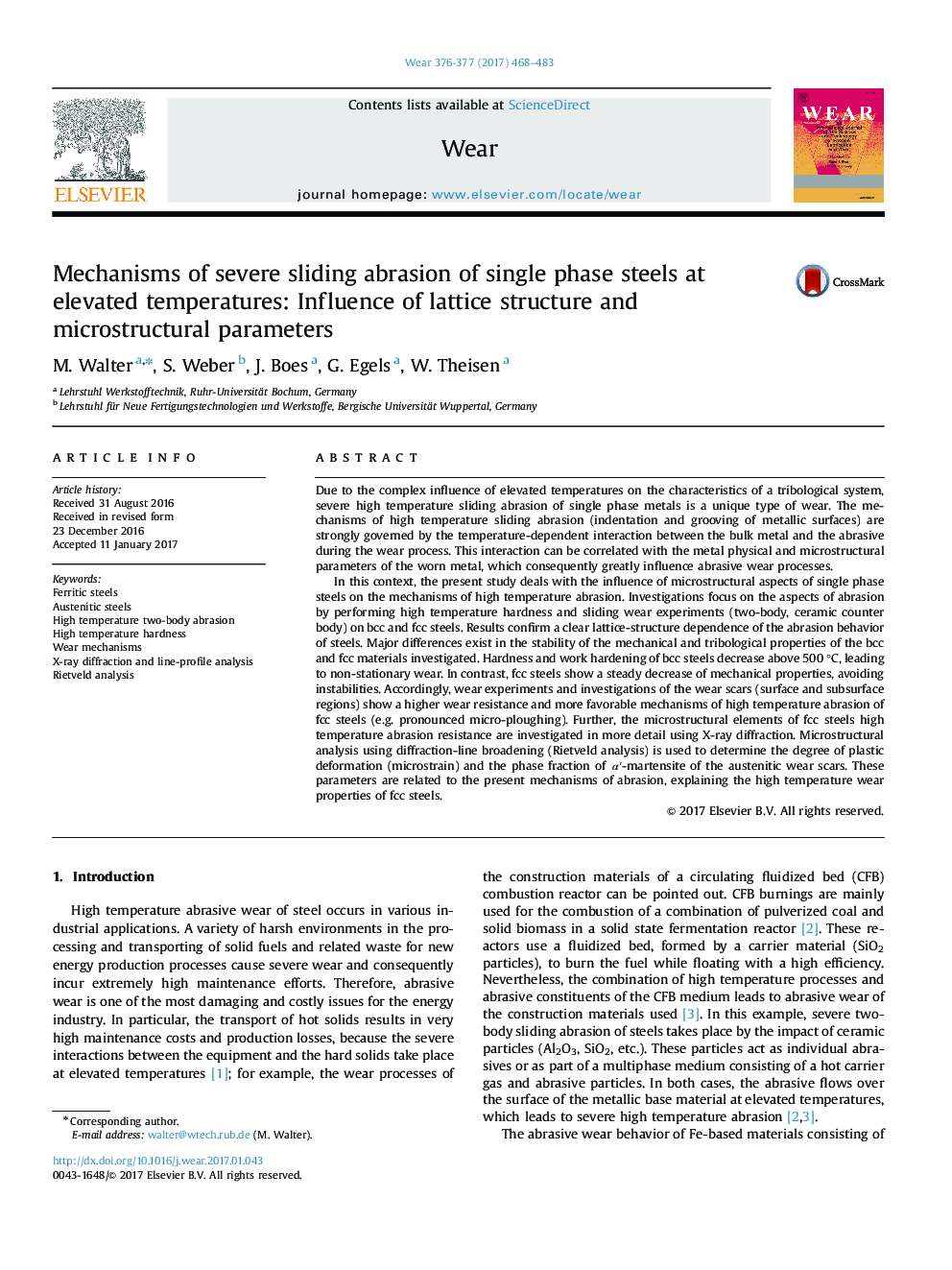| Article ID | Journal | Published Year | Pages | File Type |
|---|---|---|---|---|
| 4986716 | Wear | 2017 | 16 Pages |
Abstract
In this context, the present study deals with the influence of microstructural aspects of single phase steels on the mechanisms of high temperature abrasion. Investigations focus on the aspects of abrasion by performing high temperature hardness and sliding wear experiments (two-body, ceramic counter body) on bcc and fcc steels. Results confirm a clear lattice-structure dependence of the abrasion behavior of steels. Major differences exist in the stability of the mechanical and tribological properties of the bcc and fcc materials investigated. Hardness and work hardening of bcc steels decrease above 500 °C, leading to non-stationary wear. In contrast, fcc steels show a steady decrease of mechanical properties, avoiding instabilities. Accordingly, wear experiments and investigations of the wear scars (surface and subsurface regions) show a higher wear resistance and more favorable mechanisms of high temperature abrasion of fcc steels (e.g. pronounced micro-ploughing). Further, the microstructural elements of fcc steels high temperature abrasion resistance are investigated in more detail using X-ray diffraction. Microstructural analysis using diffraction-line broadening (Rietveld analysis) is used to determine the degree of plastic deformation (microstrain) and the phase fraction of αâ²-martensite of the austenitic wear scars. These parameters are related to the present mechanisms of abrasion, explaining the high temperature wear properties of fcc steels.
Related Topics
Physical Sciences and Engineering
Chemical Engineering
Colloid and Surface Chemistry
Authors
M. Walter, S. Weber, J. Boes, G. Egels, W. Theisen,
